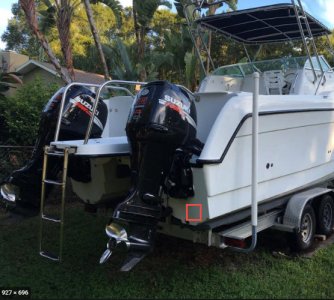sailence & Catillac,
In choosing the best position and mounting type for DFF3D transducers (or other transducers like Wide Beam CHIRP transducers) for use on catamarans, especially the trailered catamarans can be even more of a challenge. Using a thru-hull transducer is the best recommended choice. Another choice would be pocket mounting the transducer installation. And lastly, using a the transom mounting transducer configuration.
When the catamaran is being powered by outboards or with sterndrives the distance between the drives and transducer mounting in most cases is really inadequate, and generally is placed within an area of turbulent disturbed water. An example of this would be the mounting of a transducer between the outboards or sterndrives in a twin drive system. This may work for a mono hull vessel but unfortunately not for the catamaran designs. In most cases the best solution that I've stated before is to mount the transducer in a thru-hull or in pocket mount configuration which will allow the transducer to receive the least disturbed water forward of any drive(s) while still remaining “wet-faced and turbulent free”.
Also, selecting mounting limitations of the hull (taking account of vessel's hull material, the hull type and the most suitable position) including physical external impacts such as trailer rollers, trailer guides, and the lifting points.
If the hull design or trailer application does not allow for thru-hull or pocket mount transducer installations, then the transom mounted transducer is the last best option that can be used with limits to consider. Mounting the transducer on a starboard catamaran pontoon far out on starboard side of the starboard motor as possible and as deep in the water as possible. Another thing to keep in mind that sea trialing for these vessels have also demonstrated a reduction of turbulence by trimming the motor upwards.
Good luck out there..! :capt
- Deep Blue



